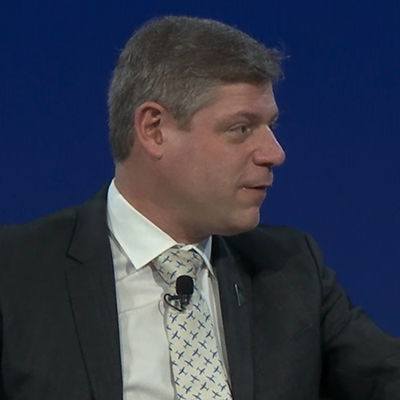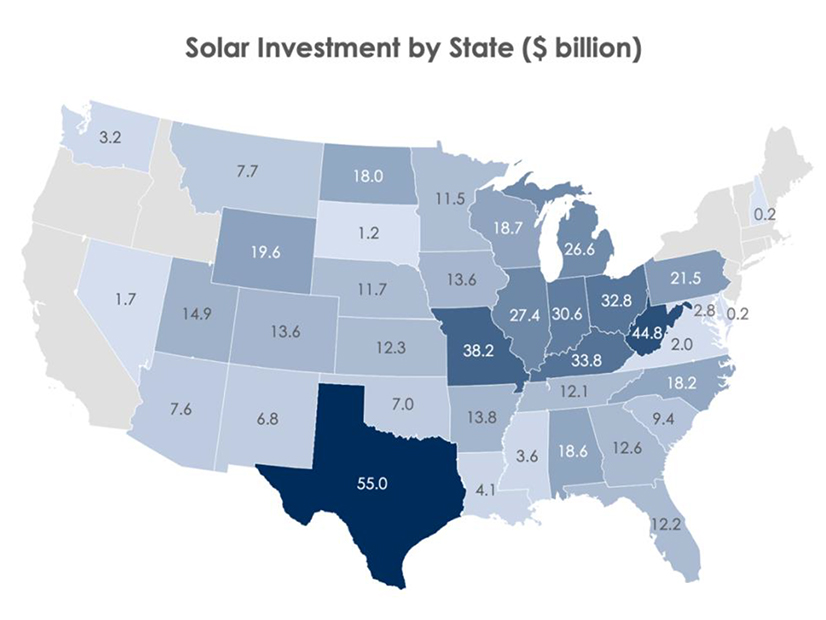For years, Faith Krausman, a Montclair, New Jersey, veterinarian who specializes in treating animal arthritis, drove her SUV to make house calls to attend to her patients.
So, when a patient’s owner mentioned that she had applied for a government grant to buy an electric vehicle, Krausman — whose interest in protecting the environment began in high school — immediately saw the possibilities for her business, Vet-On-Wheels.
“I always wanted to have a van to do this with the house calls,” Krausman said. A tall van, which allowed her to stand up, could be refitted as a mobile animal clinic in which she could see the patients in the van, instead of going into their homes and potentially making a mess, she figured.
“I would be able to do my full exam in the van with my nurse assisting,” she said. “And the owners would also be very happy that I’m not dirtying up their floor, like with shaving fur and getting blood, and this and that. So, their homes are kept nice and tidy.”
Moreover, she added, while similar mobile clinics generate carbon emissions because they run a gasoline or diesel engine to power the clinic during the examination and any surgery needed, Vet-On-Wheels’ electric vehicle would be emissions-free.
Krausman, who is outfitting the van, spoke about her project at a forum Thursday held by the New Jersey Economic Development Authority (EDA) to promote the program that provided her with the incentives to buy the van — NJ ZIP (New Jersey Zero Emission Incentive Program). The agency is stoking interest in EV truck purchases as it prepares to launch the second phase of the program, with $46 million in funding available, at the end of March.
The effort is part of an ongoing push by the state to trigger greater use of electric trucks as vehicle selection increases, drivers and fleet owners become more open to the concept, and the state’s early electric vehicle (EV) promotion policies mature.
Alongside the expansion of the NJ Zip program, the New Jersey Board of Public Utilities (BPU) in January began accepting applications for a $16.1 million program that provides incentives for the installation of chargers for medium- and heavy-duty (MHD) electric trucks. Receipts from the Regional Greenhouse Gas Initiative (RGGI) fund the program.
In addition, after a final hearing on Jan. 17 to solicit stakeholder input, the BPU is putting the final touches on a proposed rule framework that would stimulate the funding and development needed to create private and public chargers serving MHD trucks around the state. Transportation accounts for 42% of emissions in New Jersey, and MHD buses and trucks, although only 4% of all vehicles on the road in the state, account for 25% of the pollution, according to the BPU. (See NJ Retools Electric MHD Truck Charger Proposal.)
“We’ve all had the experience of driving behind a bus or truck and smelling the thick metallic diesel exhaust that emerges in its wake,” BPU President Joseph L. Fiordaliso said in a statement to announce the opening of the charger incentive program. “Through smart and strategic programs and investments, like those featured in this charging program, we can achieve cleaner air in overburdened communities and cost savings for business owners.”
Costly But Worth It
Krausman and two other grant recipients spoke at the NJ ZIP forum Thursday to help educate small businesses on the benefits of EV truck ownership as the EDA launches the second phase of the program, the state’s largest designed to promote the purchase of EVs. EDA officials said interest in the program, which awards funding on a first-come, first-served basis, is high. About 450 people signed up to learn about the program and hear from successful applicants.
The voucher-based program has awarded applicants $39 million so far for the purchase of 370 trucks, 89% of which have been Class 4 vehicles and the remainder Class 3, 5 or 6 trucks. The second phase of the program expands the focus to include the purchase of Class 7 and 8 vehicles — the largest trucks on the road, which typically haul trailers — and provide grants to trucks that will be located or working anywhere in the state, rather than in specific target areas.
Moises Luque, CEO of the Supreme Green Team, a delivery company that serves warehouses, told the forum that creating an environmentally friendly business was so important to him that his entire fleet of six trucks are electric, all funded by NJ ZIP.
He estimated that his fleet has avoided six tons of carbon emissions and said running on electricity is cheaper than on fossil fuel, especially given today’s elevated gas prices.
“It’s a little costly upfront,” he said, of opting for EV vehicles. “However, in the long run, it is well worth it.”
The program’s second phase will award $20,000 for a Class 2b truck and $90,000 for a Class 6 truck, levels that are designed to cover 75% to 110% of the extra cost of an electric vehicle over a fossil fueled vehicle, according to the EDA. The program will award up to $135,000 for a Class 7 truck and $175,000 for a Class 8 truck.
About one third — about $15 million — of the funds will be set aside for small business and another third for businesses that are located or work in environmental justice and overburdened communities. Applicants can increase the amount awarded with bonus increases if they operate a certified woman-, minority- or veteran-owned business or commit to driving 50% of the vehicle miles in overburdened communities for three years. School bus purchases also warrant extra bonuses.
Jessie Phillip, whose company renovates commercial and residential properties, said the distance limitations of an EV truck and the fact that it takes longer to charge up than it does to fill a truck with gas are certainly a factor. But they also force him to be more organized — to know where charging points are located and to closely plan his charging schedules, he said.
EVs are in some ways easier to operate, he said, noting the lower maintenance needed and the ease of charging vehicles at home overnight.
“Hey, I don’t have a gas station in my house,” Phillip said.
Public or Private Fleets
New Jersey officials know that to spark a widespread embrace of electric trucks they need to ensure plenty of charging options around the state. The RGGI-funded program to encourage installation of chargers for MHD trucks is a key part of that effort, aiming to reduce the much-cited concern that EVs can be stranded with no power because the driver couldn’t find a charging station.
The program, which will accept applications through May 12, is designed to encourage trucking companies to go electric by focusing on the development of chargers in two main areas: community charging stations in locations that could serve several trucking companies and depots to serve private fleets.
Developers of public chargers can get up to 100% of the purchase and installation costs, including up to $225,000 toward the purchase and installation of 150-kW or greater dual-port, networked DC Fast Charger (DCFC).
Funding of up to $175,000 is available for the purchase and installation of 150 kW or greater dual-port, networked DCFC for use charging a private fleet. Applicants can apply for funding for up to six chargers. (See NJ BPU Approves $16M for 1st MHD EV Charger Program.)
Stimulating Private Investment
The BPU’s straw proposal, however, seeks to establish a framework in which private funds are the driving force for charger development. The proposal is focused on “questions about who should construct, own, operate, and pay for the MHD network necessary to make New Jersey a national leader in the adoption of electrified MHD fleets and the build-out of an MHD EV Ecosystem.”
The BPU calls it a “shared responsibility” model that “promotes appropriate roles for both EDC and private investors as well as private efforts to drive MHD adoption.” The agency released a version in June 2021 and then reshaped it using stakeholder input from six public hearings, and released a new version in January (See NJ Retools Electric MHD Truck Charger Proposal.)
The biggest change in the latest version is a shift to allow private fleets to obtain incentives and support for developing make-ready projects — those with the cables, equipment and infrastructure to hook up a charging station. To be eligible, private fleets must be located or primarily operate in overburdened communities.
Private fleet charging depots seeking incentives must also replace existing fossil-fueled vehicles with electric trucks rather than simply adding them and must also agree to participate in a managed charging program, requiring that 90% of its charging needs be done in off-peak periods to minimize the extra burden on the grid and help drive down electricity rates.
Charging Burden
Several speakers at the Jan. 17 stakeholder hearing expressed support for the revised proposal, but others had concerns, particularly over the managed charging requirements.
Zack Khan, senior policy manager for Tesla, which has developed the Semi electric truck, said the proposal does not go far enough in supporting private fleets. He called it “unnecessarily complicated and burdensome on fleets, when the priority should be getting the most zero emission trucks on the road in New Jersey as fast as possible.”
“We suggest the proposal be amended so that every private charging location for truck fleets be eligible for some level of make-ready funding,” Khan said. “If the state wants to target overburdened communities, which we support, it can make those chargers eligible for 100% of make-ready costs and make all others eligible for a lower amount, whether that is 50% or 75%.”
Khan said the managed charging requirement was “problematic” and could dissuade companies from electrifying their fleets if they’re concerned about limitations on “when and how they fast they can charge their vehicles.”
Nicholas Raspanti, director of business development for Zeem Solutions, a California company that develops fleet charging hubs, urged the BPU to be flexible in the requirement that 90% of charging be done off-peak.
“We feel that that could be overly burdensome,” he said, suggesting that the managed charging rules could impact the speed of EV truck adoption.
Judy McElroy, CEO of Fractal Energy Storage Consultants, called the BPU’s suggestion that utilities implement demand charges “the elephant in the room.” One suggestion in the proposal is that the managed charging rules could be enforced by increasing the charging cost during peak charging hours.
McElroy said that demand charges make sense from the utilities’ point of view, to make customers pay their share if they charge at peak hours, rather than making ratepayers foot the bill. But she encouraged the BPU to reevaluate the strategy.
“I commend the proposal on offering incentives to accelerate adoption, but unless there’s a vehicle to address the ongoing threat of demand charges, I don’t feel like this is scalable, sustainable or economically viable,” she said.






